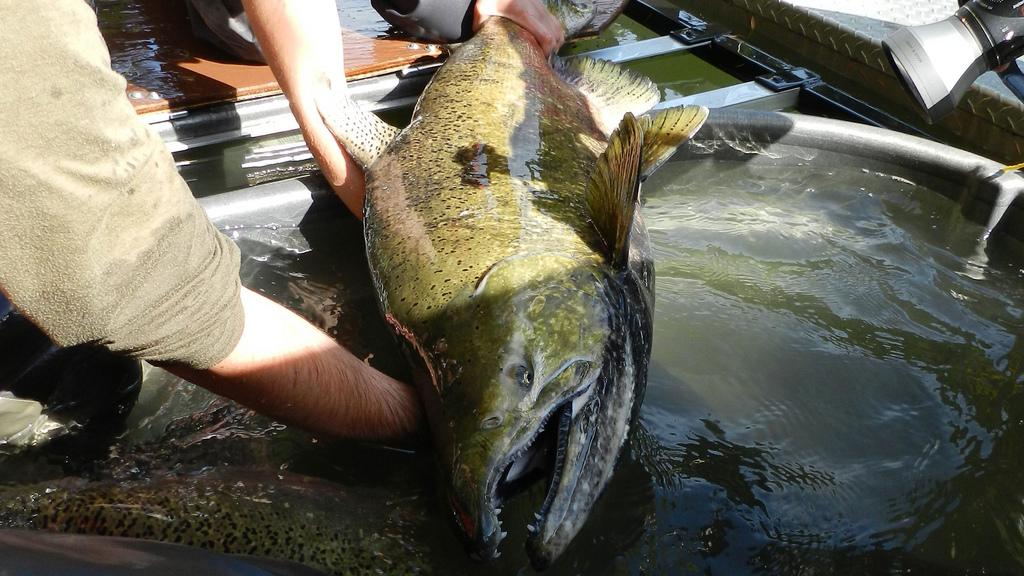
A chinook salmon from the Columbia River.
Amelia Templeton
Federal agencies are a step closer to deciding how best to manage the Columbia River system and protect endangered fish. They outlined goals for a range of plans at a public meeting Thursday.
A series of public meetings this past year gave the agencies plenty to think about. They received more than 400,000 comments about how to protect endangered salmon and steelhead and, at the same time, maintain navigation channels for river traffic, control floods, and meet hydropower demands.
The agencies have narrowed down their options to 230 possible ideas that could help solve problems in the dam system — problems that range from warm waters that kill fish to droughts that shrink irrigation supplies.
Rebecca Weiss with the Army Corps of Engineers said each of these measures should help solve specific problems, but they may not go forward in the final decision.
"If you try to meet all of our objectives, what's the right balance for that? We want to be able to show the trade-offs," Weiss said during the meeting.
One controversial option that the agencies have so far left on the table is the breaching four dams on the lower Snake River — something that is supported by fish and conservation groups.
At the meeting, people wondered:
Is the government considering how increasing amounts of renewable energy affects the grid? (Yes, they’ll look at what the different plans could mean for renewables energy development — but this may be more of an indirect question they ask.)
Are they going to consider how removing the Lower Snake River dams could increase salmon numbers and help imperiled Southern Resident Killer Whales? (Yes, but they are working on how to answer both system-wide questions and more localized issues. And this may be more of a local problem.)
Will the plan take into account how changing precipitation — from drought or climate change — could affect irrigation supplies? (Yes, irrigation is one of the main reasons the federal agencies operate the dams.)
Next, while deciding on possible plans, the federal agencies will begin to look at "secondary objectives" — problems to solve that were brought up during this year's comment period that could be considered supplemental benefits. That could include improving fish survival for non-listed species, like lamprey.
The agencies will host more public meetings next spring and fall. They expect to have a final draft impact environmental impact statement in March 2020. The process is costing an estimated $80 million, with some funding reprioritized.
